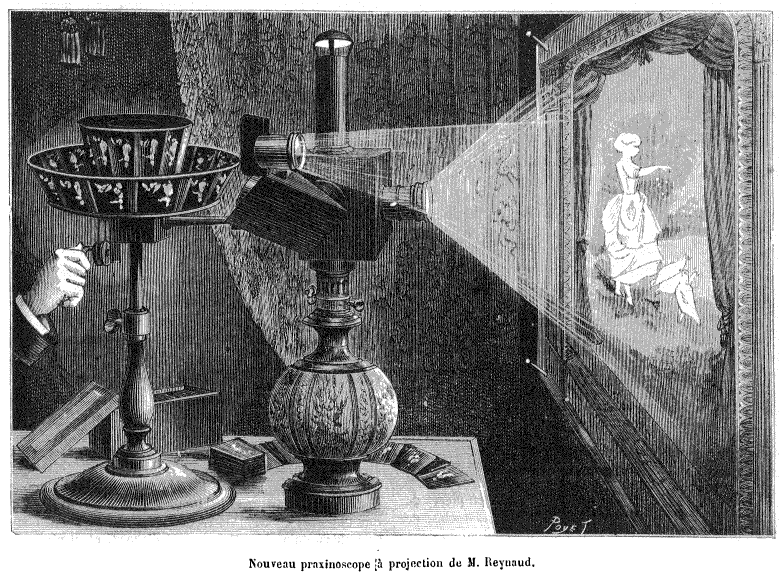Week two: History of film and animation pre-1900

Played in quick succession, these images can give the illusion of movement
All films and animations relied on Persistence of Vision, a concept introduced in a paper written by Peter Roght in 1824 that posits that a series of still images shown in quick succession can be used to give the illusion of movement (i.e. flicker fusion).


The idea of persistence of vision was incorporated in multiple late 19th century inventions (e.g. the thaumatrope, phenakistoscope and the praxinoscope, which also incorporated an early projector).
Following the development of the single lens camera by Louis Aime Augustin Le Prince and the film strips it generated, artists and directors were able to produce films at 16fps. This lead to the development of early instances of film techniques such as zoom, mid-shots, close shots, intercutting and parallel editing. Early examples of film genres such as Westerns ('The Great Train Robbery' (1903)) and the 'animal' genre (began with 'Rescued by Rover' (1905), a popular example being 'Lassie' (1943)).
| The Great Train Robbery (1903), a precursor to the Western film genre |
  |
| Rescued by Rover (1905), a precursor to the 'animal' genre with Lassie (1943), the most famous example of the 'animal rescue' genre |
No comments:
Post a Comment